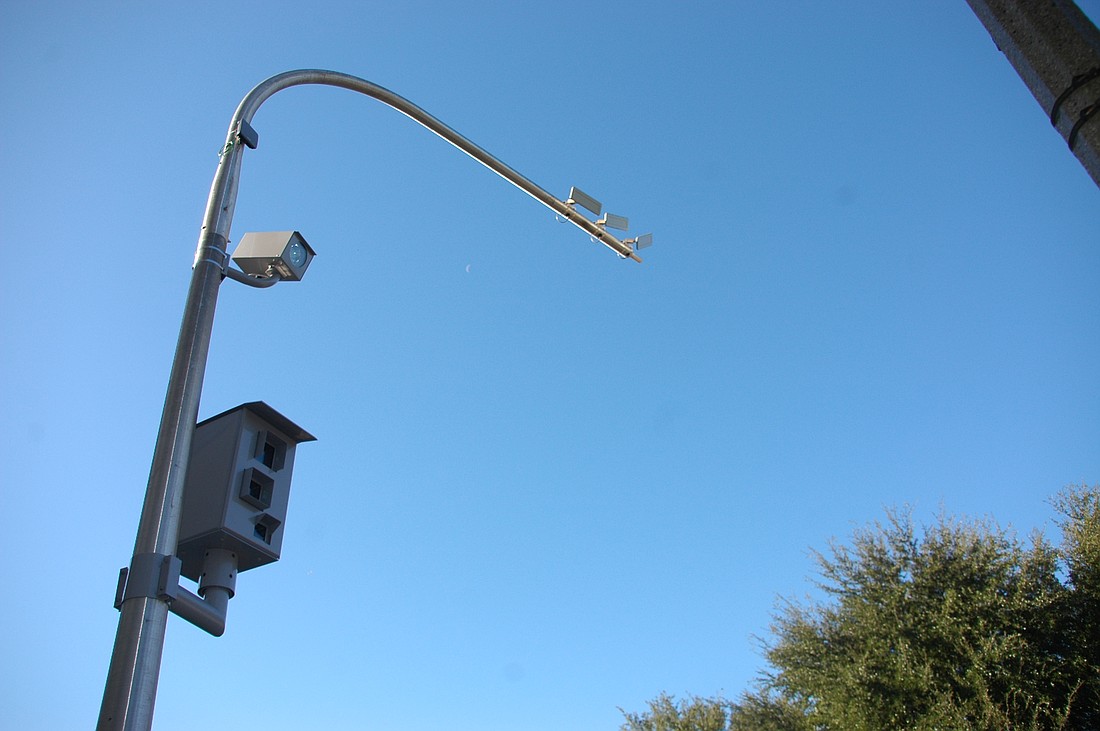- April 4, 2025
-
-
Loading

Loading

Red-light cameras are officially watching Winter Park drivers, after the city installed its first working cameras last weekend.
Now drivers on the north side of the city will face the eye of the cameras at the intersections of Howell Branch Road and Temple Trail and Howell Branch Road and Temple Drive.
More are soon to follow, as the city prepares to install cameras at the intersections of Fairbanks and Orlando avenues, Lakemont and Aloma avenues, Lee Road and Orlando Avenue, and Orange and Orlando avenues. Go-live dates have yet to be announced by the city.
“I have received a lot of negative comments about this,” Mayor Ken Bradley said. “For the life of me, I can’t figure out why someone would think of this as a negative.”
Growing numbers
The cameras have seen increasing use across Orange County, as the county and a growing number of municipalities, including Orlando and Maitland, have partnered with nationwide companies to install the cameras. Maitland’s first camera went live at Maitland Avenue and Marion Way on Jan. 1 with more to follow. Ten Orange County intersections will be monitored starting Feb. 28.
In Orange County, the cameras cost $4,750 per camera, per month to operate, not counting labor hours to process the fines. The county will receive 47.5 percent of the fines. If each camera collects less than $10,000 in fines per month, it will cost the county money. Based on that target figure, the cameras will need to collect 64 violations per month to break even.
Winter Park has a similar system and fee structure.
Money for cop training
Monday evening the Winter Park City Commission voted to designate where some of the money from the $158 fine will go. Despite repeated statements from Winter Park commissioners and other local officials that the cameras are not designed to make money for the city, the cost of the citations has risen more than 40 percent compared to original estimates. Some of that increase was based on a May 2010 decision by the Legislature in Tallahassee standardizing the fee structure and laws governing implementation of the cameras.
More than 44 percent of each fine will go to the state, with another 47.5 percent going to Winter Park. Drivers will be warned for the first 30 days, then fines will begin being collected.
At Monday’s meeting, the Commission voted unanimously to send $2 per fine to pay for police training.
“This is just consistent with what we do with other citations,” Bradley said. The appropriation would help offset the city’s costs for training police, helping improve safety, Bradley added. But he acknowledged that controversy remains about the cameras’ role in improving safety.
“We need to prove that it’s safe,” he said. “I know people have been pointing to sites that say they don’t improve safety.”
Increase in collisions?
Contrary to some recent studies of red light cameras’ impacts on the number of collisions, including a University of South Florida research study, Chief Brett Railey blamed drivers for collisions, not the introduction of red-light cameras.
“Red light cameras don’t cause rear-end collisions,” Railey said. “Drivers following too closely do.”
The USF research study showed that rear-end impacts increased at intersections where the cameras were installed. That same study showed that accidents caused by red-light runners had been decreasing steadily nationwide for the last decade, absent any cameras.
But officials in other cities have found one way that has reduced red-light violations and crashes even more quickly than their natural decline — lengthening the duration of yellow lights.
In a March 2009 report in the Atlanta Journal-Constitution, intersections in Georgia’s Gwinnett County saw the biggest drop in accidents after cities simply extended the duration of yellow lights — a measure that cost the cities no money at all. Red-light running dropped so much that the cities removed the red-light camera systems it had previously installed.